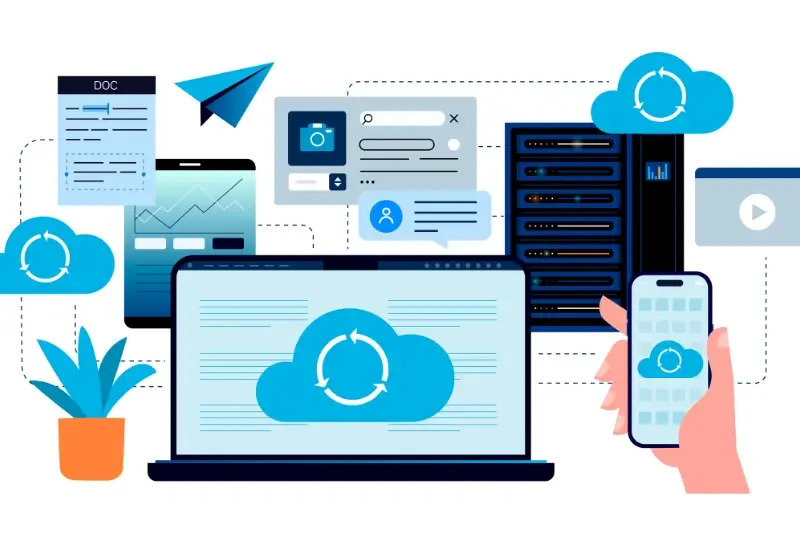Cross-Platform App Development: Everything You Need To Know
Did you know that over 90% of businesses want their mobile app to work on both iPhone and Android devices? That's a staggering number when you think about it—and it's exactly why cross-platform development has become such a hot topic in the mobile app world. Gone are the days when you could afford to build for just one platform and hope for the best.
Here's the thing though: building separate apps for iOS and Android used to be the only way to get proper performance and that native feel users expect. But technology has moved on quite a bit since then. Cross-platform frameworks have gotten seriously good at bridging the gap between different operating systems, and they're saving businesses thousands of pounds in development costs.
The biggest mistake I see clients make is choosing their development approach without understanding what cross-platform actually means for their specific project
Whether you're a startup founder trying to stretch your budget or a business owner looking to reach more customers, understanding cross-platform development isn't optional anymore—it's part of making smart decisions about your mobile app. This development guide will walk you through everything you need to know about this technology, from the basics right through to when you should (and shouldn't) choose it for your project.
What Is Cross-Platform App Development
Cross-platform app development is exactly what it sounds like—building one app that works across multiple operating systems. Instead of creating separate apps for iOS and Android (which would mean writing two completely different codebases), developers write one set of code that can run on both platforms. Think of it like writing a letter that can be read by people who speak different languages.
The magic happens through special frameworks and tools that translate your single codebase into something each platform can understand. So you write once, but your app appears on both the App Store and Google Play Store. Pretty neat, right?
How It Actually Works
Cross-platform frameworks act like translators between your code and each mobile operating system. Popular frameworks include:
- React Native (created by Facebook)
- Flutter (Google's framework)
- Xamarin (Microsoft's solution)
- Ionic (web-based approach)
Each framework has its own way of handling this translation process, but they all share the same goal—getting your app running on multiple platforms without having to start from scratch each time. From my experience working with startups who need to launch quickly, this approach can save months of development time and significantly reduce costs.
Native vs Cross-Platform Development
When you're building a mobile app, you've got two main paths to choose from—and honestly, this decision can make or break your project. Native development means creating separate apps for each platform (iOS and Android) using their specific programming languages. Swift for iOS, Kotlin or Java for Android. Cross-platform development lets you write code once and deploy it across multiple platforms.
Native apps have some serious advantages. They're fast, they feel natural to users, and they can access every feature your phone has to offer. The camera, GPS, push notifications—everything works seamlessly. But here's the catch: you need separate development teams, separate codebases, and separate maintenance schedules. That means double the time and double the cost.
Cross-platform development takes a different approach. You write your code once using frameworks like React Native or Flutter, then deploy it everywhere. Sounds brilliant, right? Well, it is—but there are trade-offs. Performance might not be quite as snappy, and you might hit walls when trying to access newer platform features.
Key Differences at a Glance
| Aspect | Native | Cross-Platform |
|---|---|---|
| Development Time | Longer | Shorter |
| Performance | Excellent | Good |
| Cost | Higher | Lower |
| Platform Features | Full access | Limited access |
The best choice depends on your budget, timeline, and app requirements. If you need maximum performance and platform-specific features, go native. If you want to reach market quickly with a solid app, cross-platform might be your winner.
Popular Cross-Platform Frameworks
Right, let's talk about the tools that actually make cross-platform development possible. There are several frameworks out there, but I'll focus on the ones that have proven themselves in real-world projects—the ones we've used successfully at Glance and see consistently delivering results.
React Native
React Native is probably the most well-known cross-platform framework, and for good reason. Created by Facebook, it lets developers write code once and deploy it to both iOS and Android. The brilliant thing about React Native is that it doesn't just wrap your app in a web view—it actually creates native components. This means your app feels genuinely native to users, with proper animations and interactions they expect.
Flutter
Flutter is Google's answer to cross-platform development, and it's been gaining serious traction lately. Unlike React Native, Flutter uses its own rendering engine, which means you get incredibly consistent performance across platforms. The learning curve can be steeper since it uses Dart programming language, but the results are often worth it—especially for apps that need complex animations or custom UI elements.
Both frameworks have their strengths, and choosing between them often comes down to your team's existing skills and your project's specific requirements. We've had great success with both at Glance.
Benefits of Cross-Platform Development
After working with countless clients over the years, I can tell you that the biggest question I get asked is: "Can we build this once and have it work everywhere?" The answer is yes—and that's exactly what cross-platform development does. It lets you create a single mobile app that runs on both iOS and Android devices, which is pretty brilliant when you think about it.
The most obvious benefit is cost savings. Instead of hiring separate teams to build two different apps, you need just one team working on one codebase. This can cut your development costs by up to 40%, which makes finance directors very happy! You'll also get your app to market much faster since you're not building everything twice.
Cross-platform development allows businesses to reach their entire audience without doubling their budget or timeline
Maintenance becomes much simpler too. When you need to fix a bug or add a new feature, you do it once rather than updating two separate apps. Your development team can focus on making the app better instead of keeping two versions in sync. Plus, you can launch updates simultaneously across both platforms, which means your users get the same experience no matter what device they're using.
Drawbacks and Limitations
Right, let's talk about the not-so-great bits of cross-platform development—because there are some, and I'd be doing you a disservice if I didn't mention them. After working on countless projects over the years, I've seen these limitations crop up time and time again.
The biggest issue? Performance. Cross-platform apps often run slower than native ones because they need an extra layer to translate your code into something each operating system can understand. It's like having a translator between you and someone who speaks a different language—things work, but there's always a slight delay.
Common Limitations You'll Face
- Limited access to device features like advanced camera functions or sensors
- User interface might not feel quite right on different platforms
- Debugging can be trickier when problems occur
- File sizes are often larger than native apps
- Updates to iOS or Android might break your app temporarily
The user experience can sometimes feel a bit "off" too. Each platform has its own design language and user expectations—Android users expect certain buttons in specific places, whilst iPhone users expect something completely different. Cross-platform frameworks try their best to adapt, but they don't always get it perfect.
These limitations aren't deal-breakers for most projects, but they're worth considering when making your decision.
When to Choose Cross-Platform Development
After years of building mobile apps for all kinds of businesses, I've learned that choosing the right development approach isn't just about technology—it's about understanding your specific situation. Cross-platform development works brilliantly for some projects and terribly for others, so let's break down when it makes sense.
The sweet spot for cross-platform development usually involves these scenarios:
- You need to launch on both iOS and Android simultaneously
- Your budget is limited and you can't afford two separate native apps
- You have a small development team or tight timeline
- Your app doesn't require complex device-specific features
- You're building a business app with standard functionality
- Rapid prototyping is more important than peak performance
If you're unsure whether cross-platform fits your project, start by listing all the features your mobile app needs. If most of them are standard UI elements and basic functionality, cross-platform is probably perfect for you.
I wouldn't recommend cross-platform development for gaming apps, camera-heavy applications, or anything requiring cutting-edge performance. Native development shines in these areas. But for most business apps, e-commerce platforms, and content-driven applications, cross-platform frameworks deliver excellent results whilst saving time and money.
Conclusion
After working with countless clients over the years, I can tell you that choosing between cross-platform and native development isn't about finding the "best" approach—it's about finding the right approach for your specific situation. Cross-platform development has come a long way since the early days when performance was questionable and the user experience felt clunky.
The frameworks we've discussed—React Native, Flutter, Xamarin—they're all solid choices that can deliver genuinely good apps. I've seen businesses save months of development time and thousands of pounds by going cross-platform, particularly when they need to get to market quickly or have a limited budget. The ability to write once and deploy everywhere is genuinely powerful.
But here's what I always tell my clients: don't let the cost savings blind you to the potential trade-offs. If your app needs deep platform integration, handles complex animations, or requires every last drop of performance, native might still be your best bet. Cross-platform works brilliantly for many apps, but it's not a magic solution for every project.
The mobile development world keeps evolving, and cross-platform tools are getting better every year. What matters most is understanding your users, your budget, and your timeline—then making an informed decision based on those factors rather than following the latest trend.
Share this
Subscribe To Our Blog
You May Also Like
These Related Stories

Your Complete Guide to Smartwatch App Development

No-Code vs. Custom Development: The Honest Comparison





